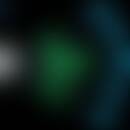Synonym(s)
DefinitionThis section has been translated automatically.
IL-4 is a cytokine with anti-inflammatory properties, which is mainly secreted by TH2 lymphocytes (see below T helper lymphocyte). Interleukin-4 differentiates naive CD4+ T cells into Th2 lymphocytes (see below T helper lymphocyte). Furthermore, the cytokine stimulates growth of B cells. Together with interleukin-13, the cytokine inhibits the differentiation of Th1 lymphocytes and macrophages by activating the transcription factor STAT6; furthermore, it inhibits the production of IFN-gamma and interleukin-12.
Spectrum of actionThis section has been translated automatically.
IL-4 stimulates activated B cells and causes a so-called immunoglobulin class switch to IgE and IgG1. In contrast, the synthesis of IgM, IgG3, IgG2a and IgG2b is suppressed. Il-4 further enhances the proliferation of T lymphocytes and increases their cytotoxicity. In addition, Il-4, together with other cytokines, stimulates the proliferation of many blood cells. It also increases the cytotoxicity of macrophages. Overall, Il-4 stimulates the humoral and suppresses the cellular immune defence.
The effect of interleukin-4 is mediated by specific interleukin-4 receptors (IL-4R, CD124) that are expressed on the surface of B-lymphocytes, T-lymphocytes, macrophages, and mast cells. The receptor density is 200-700/cell, on stimulated cells 1000-1500/cell; by Il-4 itself the receptor density can be modulated. The receptor is also present in a soluble form (sIL-4R). sIL-4R is a regulator of circulating interleukin-4, which it can neutralize.
Mutations and polymorphisms in the interleukin-4 receptor gene are associated with an increased disposition to atopic diseases.
LiteratureThis section has been translated automatically.
- Bottema RW et al (2010) Interleukin 13 and interleukin 4 receptor-α polymorphisms in rhinitis and asthma. Int Arch Allergy Immunol 153:259-267.
- Hytönen AM et al (2004) Haplotypes of the interleukin-4 receptor alpha chain gene associated with susceptibility to and severity of atopic asthma. Clin Exp Allergy 34:1570-1575.
- Narożna B et al(2016) Polymorphisms in the interleukin 4, interleukin 4 receptor and interleukin 13 genes and allergic phenotype: A case control study. Adv Med Sci 61:40-45.




